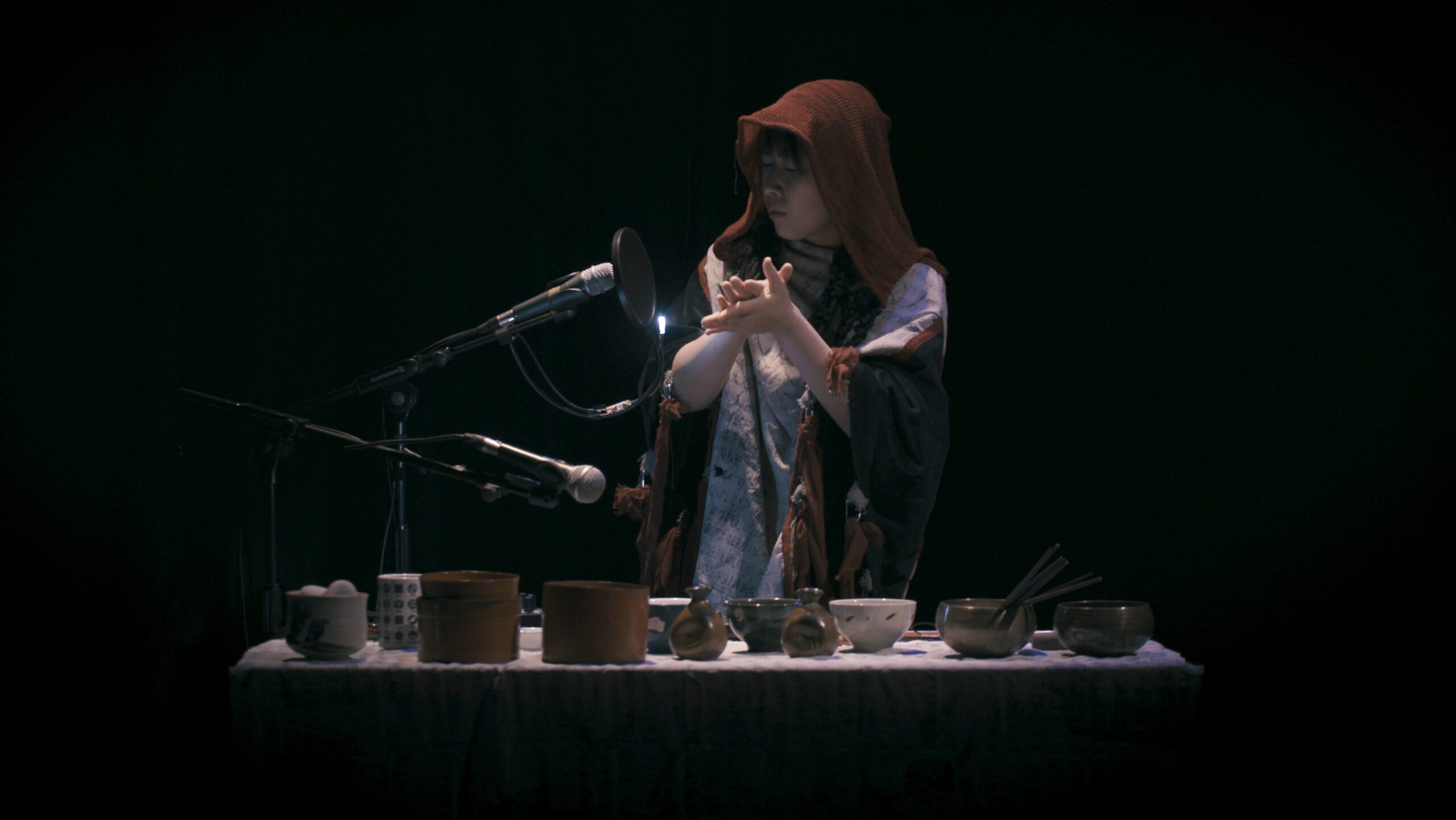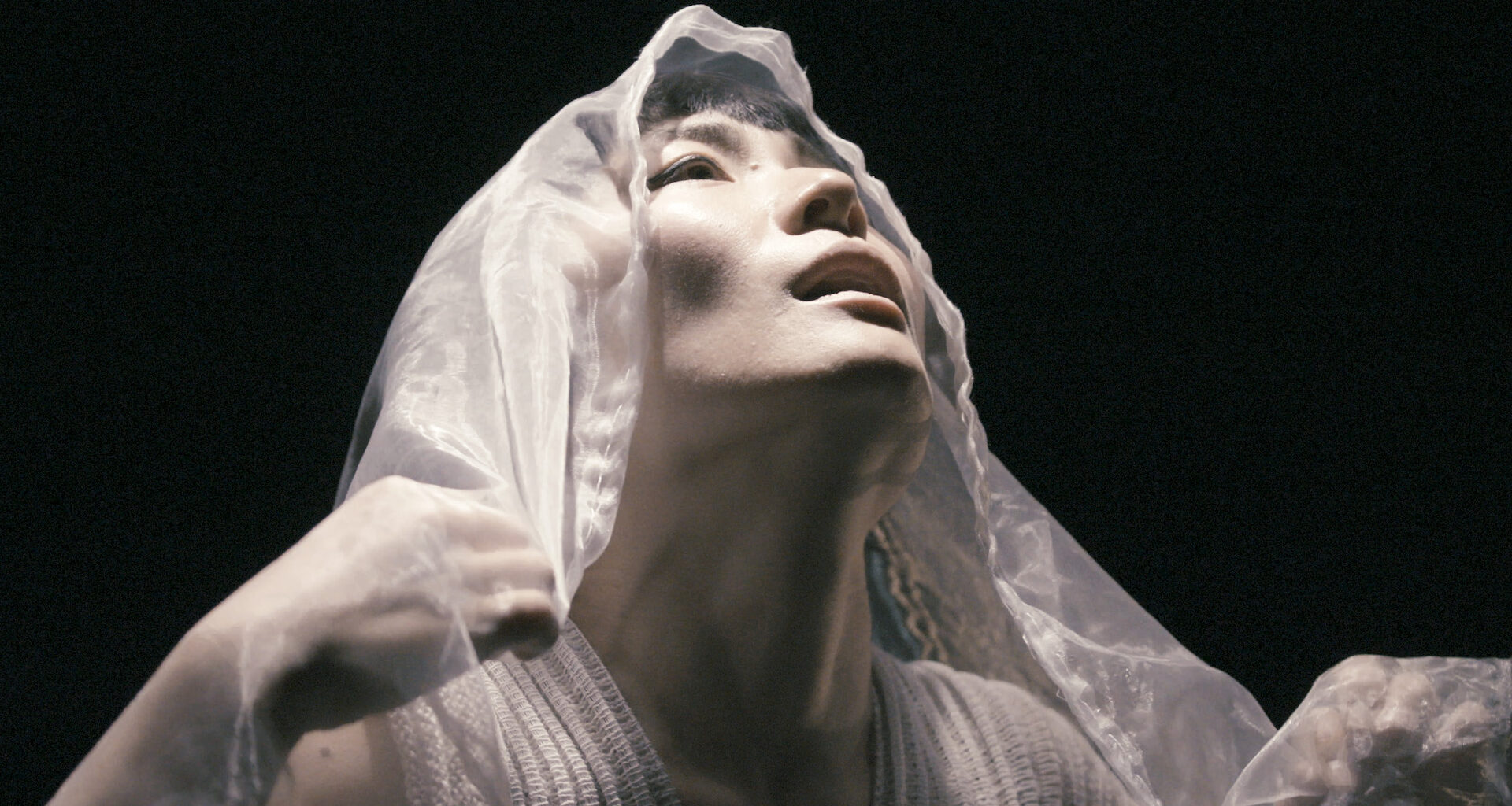
18 – 22 November
We enter to find the stage already half-consecrated: white cloth, stone, bowls, incense. Front-of-house staff hand out a single sheet outlining the East and Southeast Asian death rituals that shape the work; an invitation, a first offering. Departure, created and performed by movement artist Masumi Saito with composer and musician An-Ting, is not a story so much as a ceremony. With no spoken text, it asks us to sit inside fifty minutes of ritual action and listen with our whole bodies.
The opening is slow, deliberate and meticulous. In a tight spotlight, Saito stacks and restacks small stones, the scrape and tumble of rock on rock amplified until it becomes both music and omen. It evokes the repetitive labours of the afterlife, the sense of spirits trapped in tasks that must be completed before release. The patience of the action, and Saito’s careful footwork, teaches the audience how to watch the piece: we are not here for plot points, but for shifts in atmosphere and state.
An-Ting’s live score, with its resonant bowls, xylophone-like runs and manipulated echoes, is central. Sound travels not only from the stage but around the room, claps and chimes reverberating as if arriving from elsewhere. At times the music is barely there, a trickle of water or a distant whistle; at others it builds to a clash of metal and drum that feels like a heartbeat pushed to the edge.
The design work, from Sophie Wang’s stark white costume to Nao Nagai’s soft, dappled lighting, creates images that hover between shrine and dream. A simple sheet of cloth becomes veil, shroud, ghost and cocoon in turn. Coins appear, water is suggested, fabrics are folded and offered. There are moments of still devotion, and others where hunger and touch take over, Saito pressing textures close as if the senses themselves are famished. The dead feel present as a constant exchange of objects, gestures and tasks, handed back and forth between worlds.
Then the ceremony fractures. Red light floods the space, the music splinters into pounding rhythm and Saito, now in red, thrashes and stamps in what feels like fury, protest, perhaps even banishment. Ritual sticks crack against the floor, a war drum of grief that British funerals rarely allow. It is the point where mourning tips into something feral, closer to a howl than a hymn, before the noise finally ebbs and calm returns with the slow ring of a bowl.
After the performance, audiences are invited to stay for an optional thirty-minute post-show discussion inspired by Death Café. It opens up space for people to share experiences of death, culture and ritual, and makes explicit what the piece has been circling all along: that what Departure offers is not an explanation of death, but a shared, imaginative frame in which to think and feel around it.
This is not an evening for those seeking story or easy catharsis. It asks for stillness, attention, and a willingness to lean into abstraction. For those who do, Departure is a haunting, thoughtfully made work that honours the fact that grief often lives beyond reasonable articulation, and that sometimes the body can speak when words will not.
★★★★☆ Tilly Marshall, 20th November 2025
Photography credit: Sol Denker
